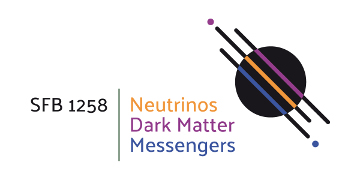In the Sun’s core, hydrogen fuses into helium in two ways. The main way, the proton-proton chain (pp-chain) generates 99 percent of the Sun’s neutrinos and energy. The rest comes from the CNO cycle, where four protons fuse, using carbon, nitrogen, and oxygen isotopes as catalysts, to produce an alpha particle, two positrons and two electron neutrinos.
An endless loop
The positron annihilates with an electron releasing gammy rays, the neutrino escapes from the star and carries away some energy, and one nucleus goes on to become a carbon, nitrogen or oxygen isotope again. Whereas in the Sun this CNO cycle is almost negligible, it is thought to be the dominant energy source in larger, and thus, hotter stars.
Background needed to be suppressed
The Borexino experiment located in the Gran Sasso underground laboratory has previously presented for the first time an overall investigation of the fusion processes in the pp-chain via neutrinos. But the neutrinos from the CNO cycle remained difficult to discriminate from those produced in the radioactive decay of 210Bi, an isotope that leaks into the detector from the housing material. After a six-year long effort, the researchers managed to slow the leakage rate to an extent that in 2019 the CNO neutrino signal could stand out for the first time.
The Standard Solar Model proves to be correct
These findings do not only confirm the theoretical predictions about the two fusion processes of the Sun, but also give a clue to the metallicity of the sun, the concentration of nuclei heavier than hydrogen and helium. Current studies suggest that the Sun is a star of low metallicity, but the overall results are not conclusive. The new Borexino results seem to be more consistent with older, higher metallicity values.
The results were presented for the first time at the Neutrino 2020 conference on 23 June 2020.
Original publication:
M. Agostini et al. (Borexino Collaboration): Sensitivity to neutrinos from the solar CNO cycle in Borexino,
arXiv:2005.12829, 28 May 2020
In the media:
Nature: Neutrinos reveal final secret of Sun's nuclear fusion, 24 June 2020
ScienceNews: Physicists spot a new class of neutrinos from the sun, 25 June 2020
Related News:
First complete assessment of the sun's fusion processes, 25 October 2018
Contact
Technical University of Munich
Chair of Experimental Astroparticle Physics
James-Franck-Str. 1, 85748 Garching
Prof. Dr. Stefan Schönert
E-mail: schoenert@ph.tum.de
Phone: +49 89 289-12511/12522
Prof. Dr. Lothar Oberauer
E-mail: oberauer@ph.tum.de
Phone: +49 89 289-12509/12522



